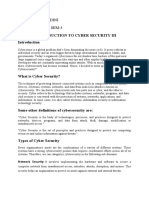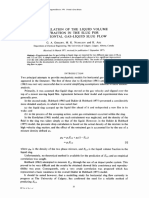0% found this document useful (0 votes)
6 views7 pagesExplaining of Cybersecurity in Critical Infrastructure
The document outlines the history and evolution of cybersecurity, beginning from the 1970s with the creation of the first computer virus and the subsequent development of antivirus software. It highlights the growing threats of cybercrime, particularly in the 2000s, and emphasizes the importance of adapting to future challenges using advanced technologies like AI. The document also discusses various types of cybersecurity, the significance of protecting personal data, and the need for effective incident management strategies.
Uploaded by
Atrio AlamedaCopyright
© © All Rights Reserved
We take content rights seriously. If you suspect this is your content, claim it here.
Available Formats
Download as DOCX, PDF, TXT or read online on Scribd
0% found this document useful (0 votes)
6 views7 pagesExplaining of Cybersecurity in Critical Infrastructure
The document outlines the history and evolution of cybersecurity, beginning from the 1970s with the creation of the first computer virus and the subsequent development of antivirus software. It highlights the growing threats of cybercrime, particularly in the 2000s, and emphasizes the importance of adapting to future challenges using advanced technologies like AI. The document also discusses various types of cybersecurity, the significance of protecting personal data, and the need for effective incident management strategies.
Uploaded by
Atrio AlamedaCopyright
© © All Rights Reserved
We take content rights seriously. If you suspect this is your content, claim it here.
Available Formats
Download as DOCX, PDF, TXT or read online on Scribd
/ 7





















































































